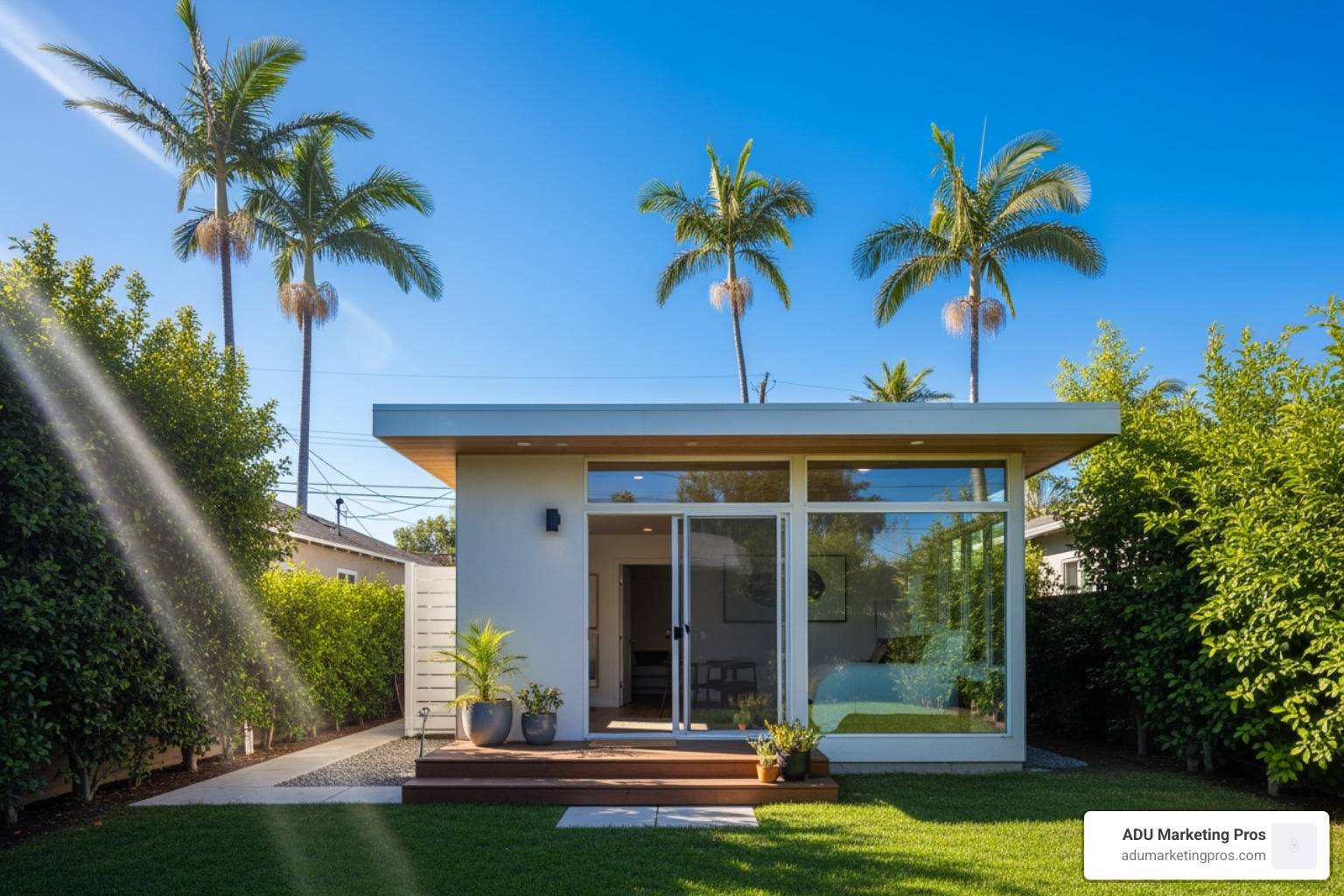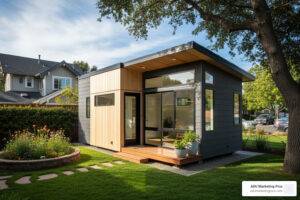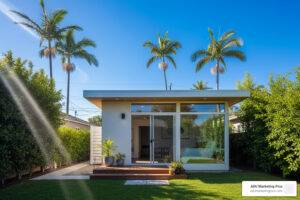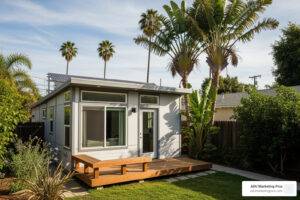Why San Diego Homeowners Are Racing to Get ADU Permits San Diego Approved
San Diego is in the midst of an accessory dwelling unit (ADU) boom. Last year, ADUs accounted for nearly 20% of all new homes approved for construction, a direct response to the region’s housing crisis. For homeowners, this presents a golden opportunity to add value, generate rental income, or house family.
However, securing adu permits san diego can be a complex undertaking. The process can take months and involves navigating a maze of zoning laws, building codes, and fee structures. Many homeowners find themselves overwhelmed before they even begin.
This guide is your roadmap to success. We’ll break down the entire San Diego ADU permit process, from initial planning to final inspection. You’ll learn how to avoid common delays, understand key requirements, and leverage financial programs to save thousands. Whether you’re planning a garage conversion or a new detached unit, we’ll provide the clarity you need to move forward with confidence.
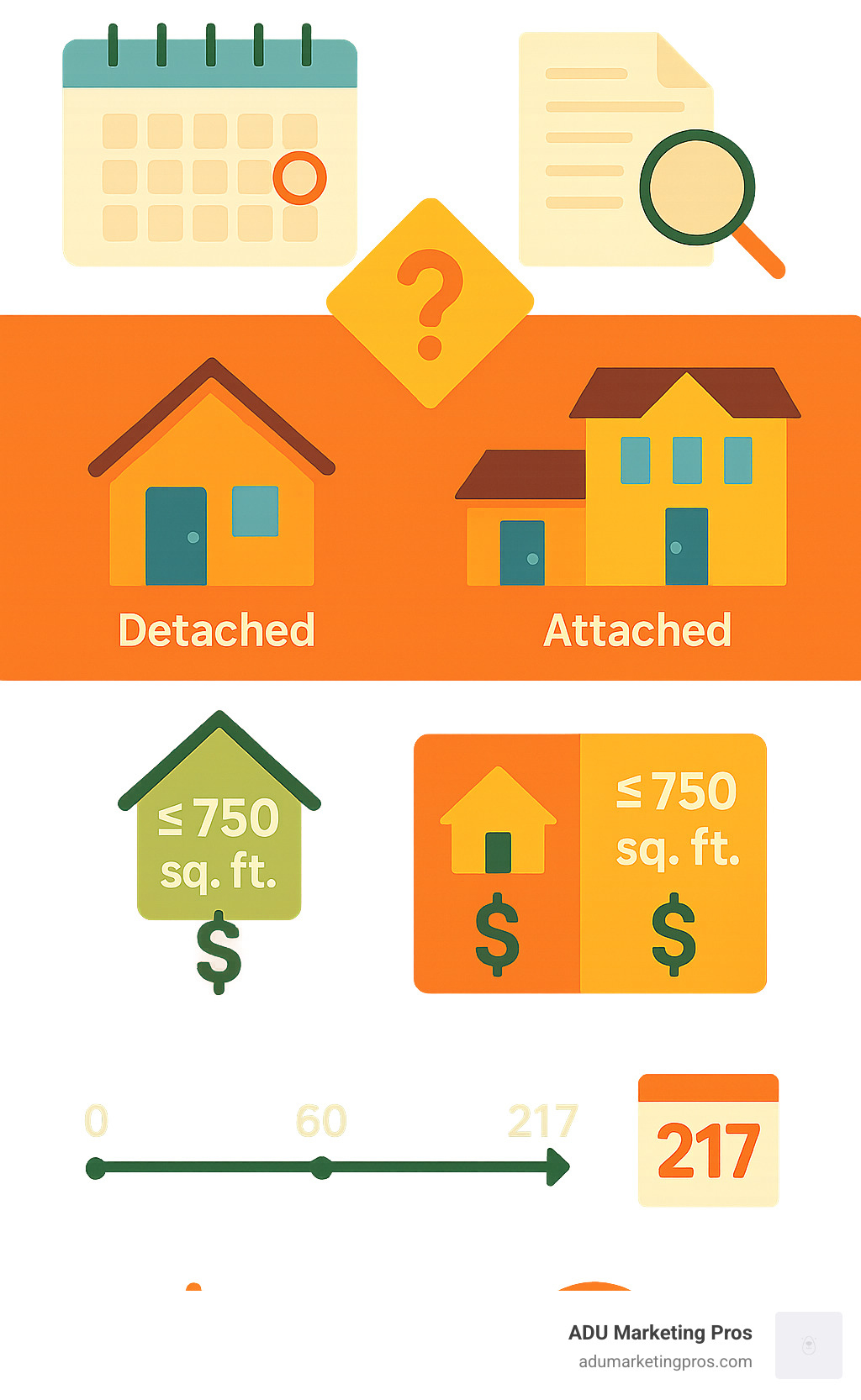
First Things First: Understanding ADUs and JADUs in San Diego
Before diving into the adu permits san diego process, understand the two main types of accessory dwellings: ADUs and Junior Accessory Dwelling Units (JADUs). Their distinct rules and characteristics will shape your entire project.

What is an Accessory Dwelling Unit (ADU)?
An Accessory Dwelling Unit (ADU) is a complete, independent home on the same lot as a primary residence. It must include its own entrance, kitchen, bathroom, and living/sleeping space. ADUs can be created in several ways:
- Detached ADU: A new, standalone structure, often built in a backyard.
- Attached ADU: A new addition that shares at least one wall with the primary home.
- Converted ADU: Changing existing space, such as a garage, basement, or a portion of the main house, into a new dwelling. Garage conversions are particularly popular in San Diego.
ADUs are designed to be fully independent living spaces. For a detailed look at the foundational rules, see our guide on San Diego ADU Laws.
What is a Junior Accessory Dwelling Unit (JADU)?
A Junior Accessory Dwelling Unit (JADU) is a smaller unit created within the existing footprint of a single-family home or an attached garage. Key characteristics include:
- Size: Limited to a maximum of 500 square feet.
- Kitchen: Requires an “efficiency kitchen” with basic cooking appliances, a sink, and a food prep area.
- Bathroom: Can share a bathroom with the primary residence if there is direct interior access.
- Owner-Occupancy: The property owner must reside on-site in either the primary home, the ADU (if one exists), or the JADU.
Key Differences: ADU vs. JADU
Understanding these distinctions is critical for your adu permits san diego application.
| Characteristic | Accessory Dwelling Unit (ADU) | Junior Accessory Dwelling Unit (JADU) |
|---|---|---|
| Maximum Size | 1,200 sq ft (attached ADU can be 50% of SFD, up to 1,200 sq ft) | 500 sq ft (minimum 150 sq ft) |
| Location on Property | Attached to or detached from primary dwelling; garage conversion | Contained within primary dwelling or attached garage |
| Kitchen Requirements | Full, independent kitchen (permanent cooking, sink, refrigeration) | Efficiency kitchen (sink, cooking appliance, food prep area, fridge) |
| Bathroom Requirements | Full, independent bathroom | Can share bathroom with primary dwelling if interior access |
| Owner Occupancy | Generally not required | Required (owner must reside on-site in primary, ADU, or JADU) |
| Separate Entrance | Required | Required |
General Eligibility for Your Property
To be eligible for an ADU or JADU, your property must be in a residential zone and have an existing (or proposed) single-family or multifamily dwelling. Regulations can vary between the City of San Diego and unincorporated areas of San Diego County. Your first step should be to confirm your property’s specific zoning details by generating a Property Summary Report using your Assessor’s Parcel Number (APN) on the county’s website: Check your property’s zoning with a Property Summary Report.
Pre-Permit Prep: Zoning, Sizing, and Special Regulations
Before drafting plans, you must understand San Diego’s specific rules for ADUs. This groundwork is essential for a smooth adu permits san diego approval process and ensures your design is compliant from day one.

Cracking the Code: San Diego Zoning Requirements
Zoning laws dictate what you can build. Here’s what you need to know:
- Unit Allowances: On a single-family lot, you can typically have one primary dwelling, one detached ADU, and one JADU. Multifamily properties have more flexibility, often allowing up to two detached ADUs plus conversions of existing non-livable space.
- Setback Requirements: This is the minimum distance required between your ADU and property lines. In a major win for homeowners, new detached ADUs under 16 feet tall can often be built with zero-foot side and rear setbacks. Taller ADUs (over 16 feet) or two-story units typically require a 4-foot setback.
For official details, the City of San Diego’s ADU/JADU webpage is the definitive source.
How Big Can You Build? Size and Height Limitations
San Diego has clear size and height limits for ADUs:
- Detached ADU: Up to 1,200 square feet.
- Attached ADU: Up to 50% of the primary home’s area, not to exceed 1,200 square feet.
- JADU: Maximum of 500 square feet.
- Minimum Size: All ADUs must be at least 150 square feet.
Height is generally limited by your zone’s maximum (often 24-35 feet), but it also impacts setbacks. An ADU under 16 feet tall qualifies for the zero-setback allowance, while taller structures do not. For more on general state guidelines, see our article on ADU Building Requirements.
Parking, Fire Safety, and Solar Rules
Beyond size and location, several other key regulations apply:
- Parking: In most cases, you do not need to provide an additional parking space for your ADU. Furthermore, if you convert a garage to an ADU, you are not required to replace the lost parking spaces.
- Fire Safety: If your main home does not have fire sprinklers, a new detached ADU generally won’t need them either. However, an attached ADU will require sprinklers if the main house has them. Building within 5 feet of a property line will also trigger requirements for special fire-rated construction materials.
- Solar Panels: Newly constructed, detached ADUs are typically required by state energy code to have a solar photovoltaic system.
These rules ensure your ADU is safe and sustainable. For more construction details, review our guide on ADU Construction Regulations.
Maximizing Your Lot with the ADU Bonus Program
San Diego’s ADU Bonus Program offers a powerful incentive to create affordable housing. If you agree to deed-restrict an ADU for low- or moderate-income households for 15 years, the city may allow you to build an additional, market-rate “bonus” ADU. In Transit Priority Areas, there is no limit to the number of bonus units you can earn. This program can dramatically increase your property’s density and rental potential. Learn more from the city’s ADU Bonus Program Quick Facts.
The Step-by-Step Guide to Securing ADU Permits in San Diego
Navigating the adu permits san diego process is a marathon, not a sprint. Understanding each stage helps you stay on track and avoid costly detours. Here is your roadmap to a successful permit application.
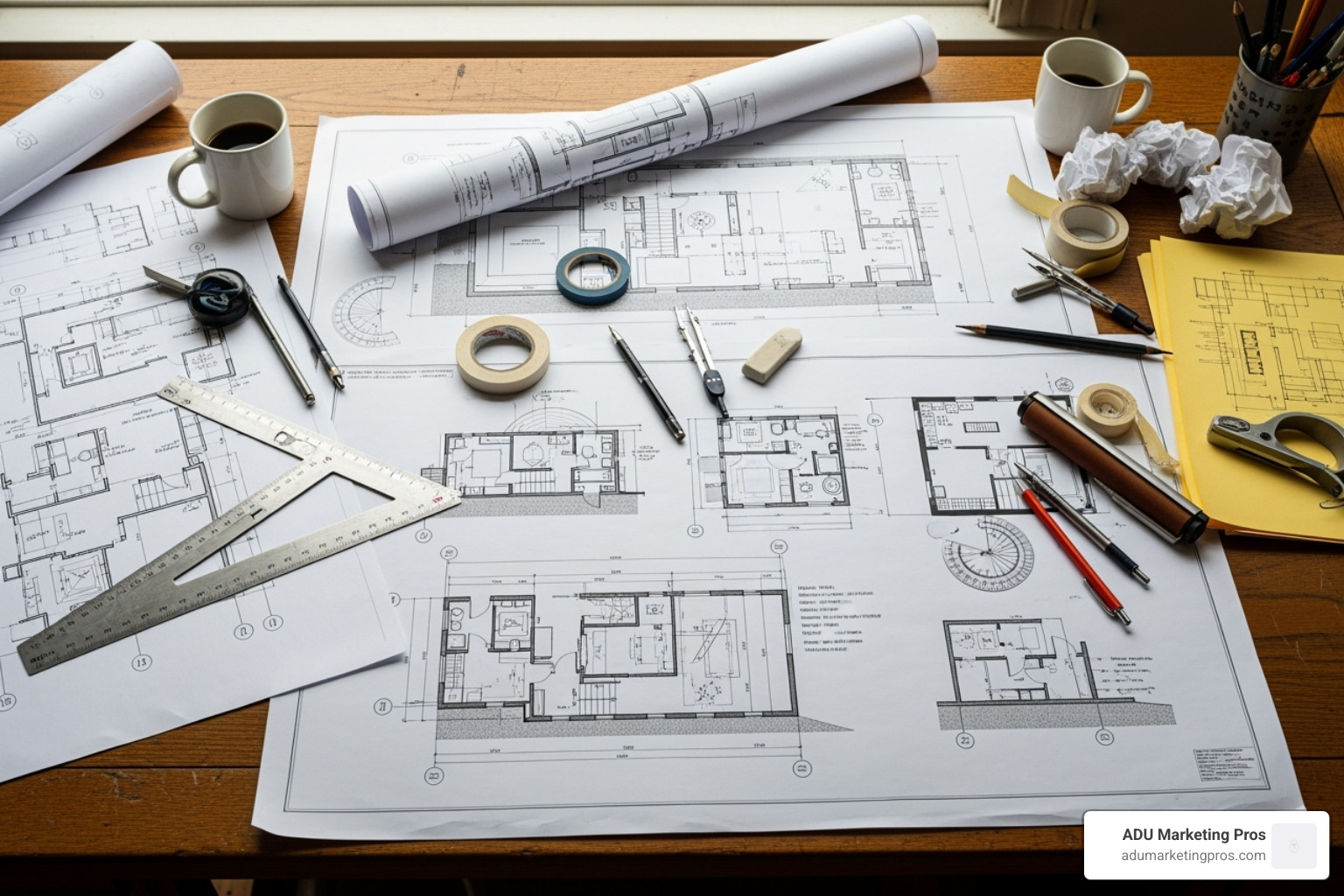
The San Diego ADU Permitting Process Explained
Here is an overview of the key steps to secure your permit:
- Step 1: Pre-application & Planning: This is the most critical phase. Verify your property’s zoning and eligibility, develop a compliant ADU design with a professional, and gather all necessary documents, including site plans, floor plans, and elevations.
- Step 2: Application Submission: San Diego uses a digital-first system. You will submit your complete application package and pay initial review fees (typically $1,500-$2,500) through the city’s Digital Application Portal.
- Step 3: Plan Review & Revisions: The city’s Development Services Department reviews your plans for compliance. While the initial review period is targeted at 60 days, it’s common to receive comments or correction requests. You will address these and resubmit, with subsequent reviews taking about 30 days.
- Step 4: Final Approval & Permit Issuance: Once your plans are approved, you will pay the remaining building permit and impact fees. The city will then issue your official building permit, giving you the green light to start construction.
- Step 5: Construction & Inspections: Throughout the build, city inspectors will visit your site at key milestones (foundation, framing, electrical, etc.) to ensure the work matches the approved plans and meets code. Passing a final inspection completes the process.
How Long Does It Take to Get an ADU Permit in San Diego?
The average timeline for adu permits san diego approval is approximately 217 days. While state law mandates a 60-day review period for the initial application, the entire process, including revisions and resubmittals, often takes longer.
Common causes for delays include:
- Documentation Errors: Incomplete or inaccurate plans are the number one reason for delays.
- Zoning Conflicts: Designs that fail to meet setback, height, or other zoning rules will be rejected.
- Incomplete Plans: Missing technical details or structural calculations will require extensive revisions.
To avoid these pitfalls, hire licensed professionals. An experienced architect and contractor who understand local codes are invaluable. Thorough pre-planning and using the city’s online resources can also significantly speed up your timeline. For more on statewide permitting, see our ADU Permits California guide.
Speeding Up the Process: Pre-Approved ADU Plans
To streamline the permitting process, consider using pre-approved ADU building plans. These are standardized designs that have already been reviewed by the city for code compliance, effectively making them “permit-ready.”
Using a pre-approved plan can shorten the city’s review time significantly, often to just 30 days. Both the City and County of San Diego offer these resources, which can save you time and money on design fees. You will typically license a plan from the original provider and adapt it to your specific site. Explore the available Standard ADU Building Plans (accepted by the City of San Diego) to get started.
Budgeting Your Build: A Breakdown of San Diego ADU Permit Costs & Financial Aid
Building an ADU is a significant investment. Understanding the costs associated with adu permits san diego is crucial for creating a realistic budget and avoiding financial surprises.

What’s the Real Cost of an ADU Permit in San Diego?
On average, expect to pay between $9,000 and $20,000 for ADU permits in San Diego. The final cost depends on the ADU’s size, location, and type (new construction vs. conversion). For example, a 1,200 sq ft ADU might have permit fees around $18,000, while a 750 sq ft unit could be closer to $11,000.
These costs consist of several fee types:
- Plan Check & Building Permit Fees: These cover the city’s time to review your plans and issue the permit to build.
- Impact Fees: These are contributions to public infrastructure and services, such as schools, parks, and transportation. For ADUs over 500 sq ft, school fees are typically around $4.08 per square foot.
- Sewer & Water Fees: These fees cover the connection to public utilities and can be several thousand dollars, though discounts are often available.
For a broader look at costs, see our guide on ADU Permit Cost California.
Opening up Savings: Fee Waivers and Reductions
Fortunately, there are opportunities to reduce your permit costs. The most significant is the statewide SB13 waiver, which exempts ADUs under 750 square feet from costly impact fees. This can save you thousands of dollars. JADUs (under 500 sq ft) also benefit from special fee exemptions.
While some generous local fee waiver programs have recently expired, it’s always wise to check directly with the City of San Diego’s Development Services department for any new or updated incentives. Staying informed about current legislation like SB13 is key to minimizing costs for your adu permits san diego.
Financial Assistance for Your ADU Project
Beyond fee waivers, financial aid programs can make your ADU project more attainable. The San Diego Housing Commission (SDHC) ADU Finance Program is an excellent resource for homeowners in the City of San Diego.
This program offers construction-to-permanent loans of up to $250,000 to eligible low-income homeowners. It features attractive fixed interest rates and includes free technical assistance to guide you through the entire process, from design and permitting to contractor selection. In exchange for the assistance, the ADU must be rented at an affordable rate for seven years.
This program can be a game-changer for those who need a financial push to get started. Learn more about the SDHC ADU Finance Program to see if you qualify.
Frequently Asked Questions about San Diego ADU Permits
Here are concise answers to the most common questions we receive about adu permits san diego.
How many ADUs can I build on my single-family property in San Diego?
On a typical lot zoned for a single-family home, you can build one ADU and one JADU. This means a single property can potentially host three distinct living units: the primary home, a full ADU, and a junior ADU. The rules for multifamily properties are even more generous, often allowing for multiple ADUs through new construction and conversions.
Do I need an architect to get an ADU permit?
While not legally required, hiring a licensed architect or an experienced ADU designer is highly recommended. These professionals understand San Diego’s complex building codes and zoning laws. They create accurate, compliant plans that are crucial for avoiding the common mistakes and revisions that cause significant delays and add costs to your project. An expert’s guidance is an investment in a smoother, faster permitting process.
Can I legalize an unpermitted ADU in San Diego?
Yes, the City of San Diego has a formal process for legalizing unpermitted dwelling units. The process requires submitting detailed plans and bringing the structure up to current building, fire, and health and safety codes. This may involve significant renovations to ensure the unit is safe and habitable by today’s standards. While it can be a substantial undertaking, it’s the only way to protect your investment and legally rent or occupy the space. You can find official guidance in the city’s bulletin on legalizing unpermitted ADUs.
Conclusion: Your Next Steps to a Successful ADU Project
Building an ADU in San Diego is a powerful investment in your property and a meaningful contribution to the city’s housing supply. While securing adu permits san diego involves multiple steps, it’s a manageable process with the right preparation and knowledge.
By understanding the regulations and leveraging available resources like pre-approved plans and financial aid programs, you can steer the journey smoothly and turn your vision into a reality. The key is careful planning and a clear understanding of the path ahead.
For construction and architecture firms aiming to capitalize on this booming market, connecting with homeowners is paramount. ADU Marketing Pros specializes in helping firms like yours attract high-quality leads by showcasing your expertise. For homeowners ready to take the next step, the journey begins with inspiration. Explore pre-approved ADU plans for San Diego to spark your imagination and get your project rolling today.

